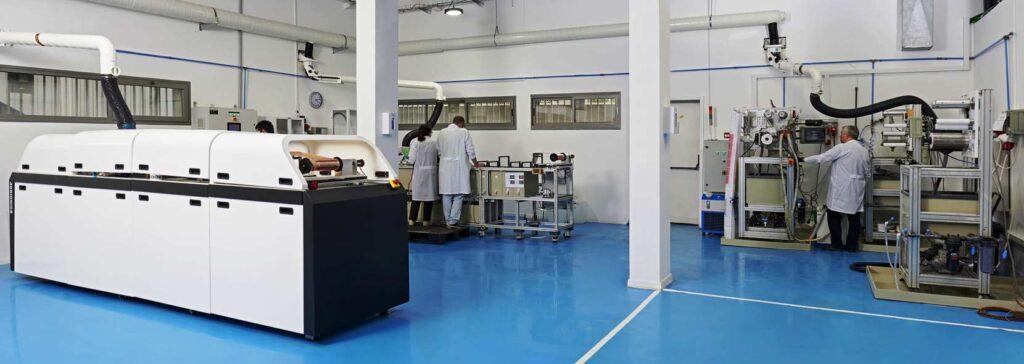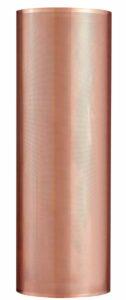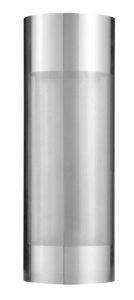
Addionics laboratory.
Artificial intelligence (AI) is being used to fine-tune the physical structure of batteries in order to improve performance.
One of the pioneers in the field is the Addionics battery technology company which, it says, is paving the way forward to an electrified, sustainable economy via its AI-powered, patented Smart 3D Electrode Solution.
Addionics was named a 2022 Bloomberg NEF Pioneer. “While most companies try to improve batteries by focusing on the chemistry – we focus on the physics. This allows us to achieve significant improvement in battery performance for any battery chemistry,” it says.
Manufacturers will be able to make better performing batteries at a lower cost using the manufacturing processes and designs crea

ted by Addionics.
Furthermore, by focusing on the battery’s physical structure instead of its chemistry, Addionics’ “chemistry agnostic” solution can be easily integrated with any existing and emerging battery types, powering every battery application in the world, according to the company.
Benefits claimed for the Addionics technology include a 50% reduction in charging time, increased safety and up to 150% longer lifespan of the battery.
Automotive Industries (AI) asked Sam Jaffe, Senior Director, Business Development at Addionics, AI is helping to reduce battery costs while improving performance.
Jaffe: AI design is helping to reduce the amount of metal in the battery. It optimizes the use of copper or aluminum in the battery by creating a porous structure which delivers the same electrochemical performance with less material.
Using our patent-protected scalable Smart 3D Electrodes™ fabrication method, we enhance battery performance: capacity, safety, charging time, lifetime, and cost. We make current collectors, and a current collector needs to do two things.
Number one, it needs to collect current. If you only needed to collect current, you could make it 10 times thinner than it is today. But, the second role is it serves as the substrate for the electrode slurry in the battery manufacturing process.
So, it is the material that is being run through the machines, over rollers. All of that mechanical stress needs something to be much, much thicker and heavier.
Our thinking was that if we can make if we can make a material that has that has pores in it, which means it has less metal, but has the same mechanical stability, it will be able to go through manufacturing process, and we will have reduced the cost of the battery.
Additionally, because it has pores in it, the active electrode material adheres better to the foil. So now you have a better adhesion. And it also makes it more conductive. Because now you do not just have

electrodes sitting on top of a foil, they are actually mixed in together and the conductivity of the battery gets better. And with conductivity, you can make thicker electrodes and do a number of things.
AI: Can Addionics’ ‘chemistry agnostic’ solution be easily integrated with any existing and emerging battery types?
Jaffe: On the copper side, we are working with lithium, as well as traditional graphite and all kinds of graphite and carbon mixtures. So, it can be used for copper foil on the anode and aluminum foil on the cathode. The advantages are the same.
The advantages are better adhesion, and better conductivity. If think of a battery in a physical sense, ions are moving back and forth. The electrical charge is also moving back and forth.
The smoother that pathway and the less resistance to the movement, the more conductive the battery is both ionically and electrically. When you improve conductivity, all kinds of other good things happen in the battery.
AI: How do you integrate your Smart 3D Electrodes™ architecture with AI structure optimization algorithm?
Jaffe:

The beauty of our copper process is we are electro depositing the copper so we are making foil out of a bath of copper sulphate. It is just like every other couple copper foil manufacturing process.
The difference is that we can tune it. It is highly and very precisely tunable. We can tune the pore size, and we can do it very consistently.
The AI optimization and the modelling software that we have built allows us to factor in all the variables for a particular battery application. We can do a lot of simulation in advance to decide how to tune the properties of the material.
AI: How does AI simulation affect development and optimization processes?
Jaffe: What it does is it shortens the timeframe to development. Normally, the process of adding a new component to a battery cell is very, very long, with many different iterations.
Basically, you build it and if does not work, you start again. If it works a little bit, you improve on it a little bit and you just keep going through that cycle.
So, anything you can do on the computer before you are actually making the battery shortens the time period of getting a battery to market.
AI: What’s next for Addionics?
Jaffe: Addionics is a technology company, and up to now we have essentially been a research and development start-up. What is next is manufacturing. We are moving onto the manufacturing stage, and we are hoping to build a factory in the United States for the US and North American battery industry and eventually expand to Europe and Asia.












More Stories
DuPont materials science advances next generation of EV batteries at The Battery Show
How a Truck Driver Can Avoid Mistakes That Lead to Truck Accidents
Car Crash Types Explained: From Rear-End to Head-On Collisions